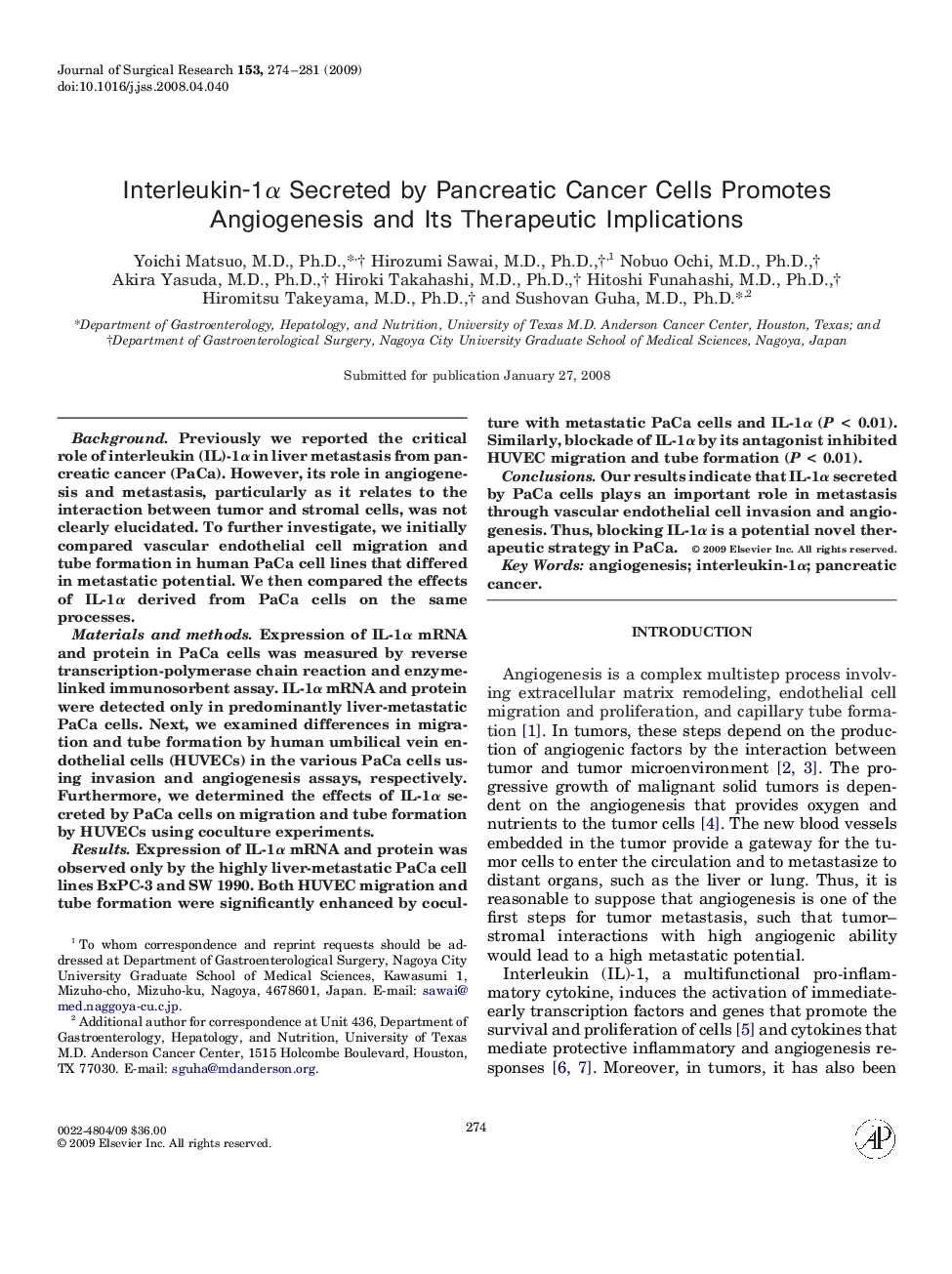| Article ID | Journal | Published Year | Pages | File Type |
|---|---|---|---|---|
| 4303923 | Journal of Surgical Research | 2009 | 8 Pages |
BackgroundPreviously we reported the critical role of interleukin (IL)-1α in liver metastasis from pancreatic cancer (PaCa). However, its role in angiogenesis and metastasis, particularly as it relates to the interaction between tumor and stromal cells, was not clearly elucidated. To further investigate, we initially compared vascular endothelial cell migration and tube formation in human PaCa cell lines that differed in metastatic potential. We then compared the effects of IL-1α derived from PaCa cells on the same processes.Materials and methodsExpression of IL-1α mRNA and protein in PaCa cells was measured by reverse transcription-polymerase chain reaction and enzyme-linked immunosorbent assay. IL-1α mRNA and protein were detected only in predominantly liver-metastatic PaCa cells. Next, we examined differences in migration and tube formation by human umbilical vein endothelial cells (HUVECs) in the various PaCa cells using invasion and angiogenesis assays, respectively. Furthermore, we determined the effects of IL-1α secreted by PaCa cells on migration and tube formation by HUVECs using coculture experiments.ResultsExpression of IL-1α mRNA and protein was observed only by the highly liver-metastatic PaCa cell lines BxPC-3 and SW 1990. Both HUVEC migration and tube formation were significantly enhanced by coculture with metastatic PaCa cells and IL-1α (P < 0.01). Similarly, blockade of IL-1α by its antagonist inhibited HUVEC migration and tube formation (P < 0.01).ConclusionsOur results indicate that IL-1α secreted by PaCa cells plays an important role in metastasis through vascular endothelial cell invasion and angiogenesis. Thus, blocking IL-1α is a potential novel therapeutic strategy in PaCa.
